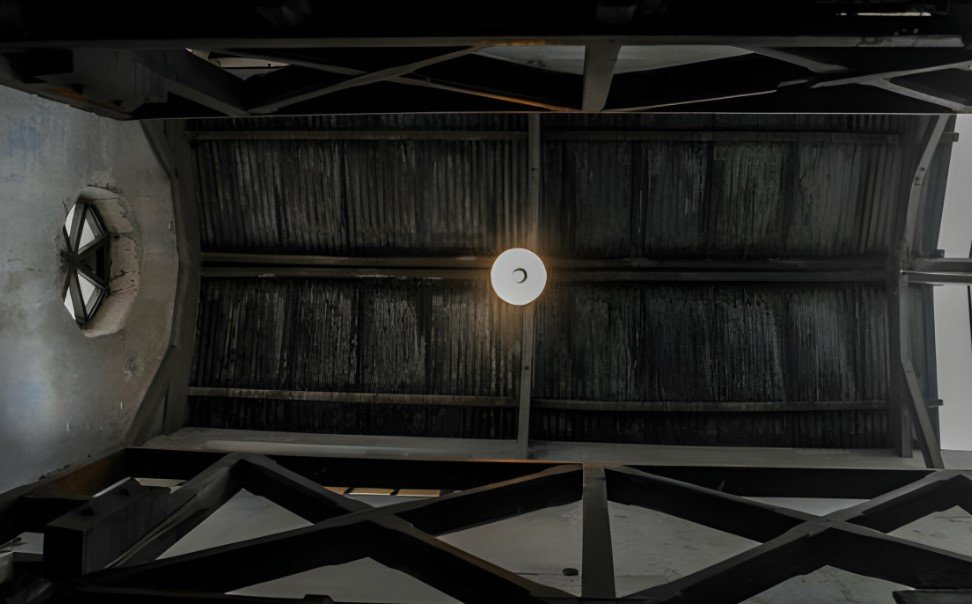Home Improvement
How Does Airflow Work in Barns?

Airflow in a barn is an essential piece of the puzzle when prioritizing animal health. Air quality matters. If it’s not a priority, respiratory health problems can develop, putting your entire livestock at risk.
A well-ventilated barn does not happen accidentally. It takes smart design and, often, additional elements such as barn fans to ensure the air moves safely. In addition, stagnant air is removed.
Here is how airflow works in barns and what you can do to control it.
Airflow Impacts Temperature & Humidity
A well-ventilated barn does several things. It controls the air temperature, keeping temperatures between 10 and 24 degrees Celsius. It helps control humidity, avoiding overly dry or moist conditions.
Moisture build-up can be a huge risk to animals as it breeds dust, pathogens, and bacteria across bedding, manure, and feeding materials. Airflow also helps move out gases, such as ammonia and hydrogen sulphide.
Air Velocity Is Central to Airflow
Airflow shouldn’t occur quickly or abruptly. Sudden temperature shifts, for example, can be very uncomfortable for animals to cope with.
Airflow should also be evenly distributed throughout a barn to minimize drafts and sudden shifts in temperature. A constant, slow shifting of air is what you want, moving out warm, moist, dusty, and smelly air in favour of fresh air.
Airflow Alters How Much Moisture Is Left In A Barn
The air holds moisture. As the temperature rises, the amount of moisture that air can carry rises. Cold air has a low moisture-holding capacity by comparison.
Airflow and ventilation must be designed to heat incoming fresh air to remove the moisture inside the barn. This can be key in several barns, as if no heating element is included within an airflow system, a much larger volume of air must be exchanged. This is to remove excess moisture.
Mechanical Airflow Uses Barn Fans to Move Air
In most situations, barn fans are required to move air efficiently and maximize airflow. Fan-ventilated barns use fans as small vacuums in small openings in the structure to create jets of air from inlets.
Incoming air can be heated quickly to remove its draft potential, and moisture is captured, lifted, and released. You’re treating the incoming air exactly how airflow works in barns. Mechanical ventilation systems leave nothing to chance.
How to Use Barn Exhaust Fans
Barn exhaust fans do not have to be large to provide sufficient supplemental heat and air to maintain continuous exchange year-round. Barn exhaust fans should provide at least two air changes every hour.
Many barns limit themselves to one air change per hour to minimize mechanical airflow costs. Most barn exhaust fans have a two-speed or variable-speed feature. A temperature sensor can control these exhaust fans, which automates operations without human intervention.
Warm Air Rises Because It’s Less Dense and Lighter
Airflow naturally tends to raise warm air. Natural barn ventilation systems use this wisely. Warm air rises and can be exhausted in a peak vent or chimney, carrying moisture and active gases.
Fresh air intake must be properly designed for this to happen. A poor inlet design can mean cold air and drafts during fall and spring, minimizing the temperature contrast required from outside to inside.
Natural Ventilation Systems Use Air Buoyancy and Wind
Natural ventilation systems use how air moves and behaves to create airflow in barns. As they’re organic, they operate quietly but require more management and often do not exclusively manage the air quality inside a barn.
Natural systems require building orientation. Length must be perpendicular to the prevailing wind, removing obstructions around the barn. Some barns are naturally cold, others moderately warm, and each requires a different design to maximize optimum ventilation.
How Air Inlets in a Barn Work
Air inlets are slot-like openings typically at the top of side walls from outside or in the ceiling. Air inlets are an alternative to windows, which must be adjusted as temperature or airflow changes. Inlets don’t require the same ongoing management.
This aside, a barn that is already leaky may not need fresh air inlets as they already have ventilation. The challenge with a barn like this is preventing drafts from air infiltration. An internal air duct system can mix barn air with infiltration air to create blended air that mitigates draft problems.
Monitoring Airflow in a Barn
Monitoring airflow effects is essential. Have monitors on your fans and heating system to limit total costs and automate barn airflow operations. A minimum-maximum thermometer can monitor temperature fluctuations.
Barn humidity can also be monitored, as can air movement and drafts. Gas detection tubes can be installed to detect ammonia, carbon dioxide, and other toxic gases.
-

 Social Media2 months ago
Social Media2 months agoWhat the “67” TikTok Meme Really Means
-

 Tech2 months ago
Tech2 months agoWhat To Do When Your Business Faces Network Vulnerabilities
-

 Self Improvement2 months ago
Self Improvement2 months agoUsing BCBS Rehab to Access Quality Addiction Care
-

 Games2 months ago
Games2 months agoPusoy Strategies for Play That Also Work in Pusoy Dos in English






